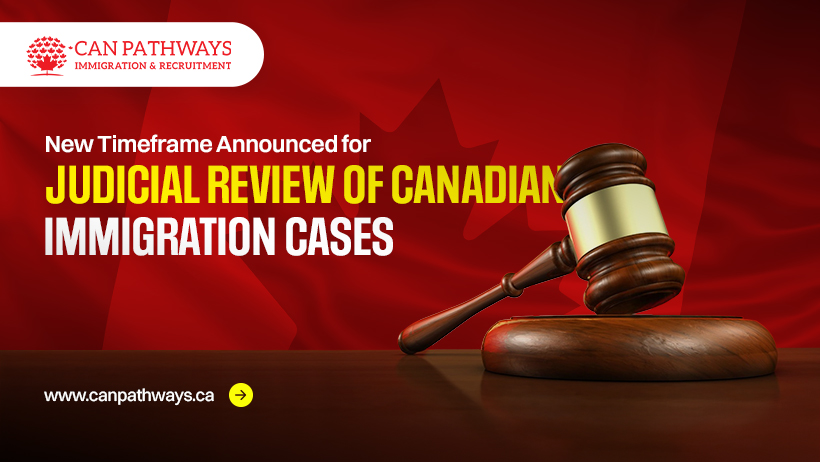Canadian Immigration Applicants Granted Extended Time to Seek Judicial Review
The Federal Court of Canada has introduced special measures allowing immigration applicants an additional 45 days to request judicial permission—formally known as “leave”—to challenge decisions made on their immigration cases. This extension provides more time for applicants to pursue a judicial review of unfavorable outcomes.
Previously, applicants had just 30 days to act. Under the new measures, once leave for judicial review is granted, the Federal Court of Canada will assess the immigration decision. If the court identifies a legal error or misunderstanding, it may order the application to be reconsidered.
These special measures, issued on May 14, 2025, are a direct response to the growing backlog of leave and judicial review applications that accumulated throughout 2024 and into 2025.
Explaining the Updates to Immigration Judicial Review Timelines
The Federal Court’s review of an immigration decision generally involves two key stages:
- The leave stage, where the applicant seeks permission for a review; and
- The judicial review stage, where the court examines the decision if leave is granted.
Under the newly introduced changes, applicants are now granted an additional 45 days to “perfect” their leave application. This means that after submitting the initial request for leave, they now have a total of 75 days—up from the previous 30 days—to complete their application and file the full applicant record for the court’s consideration.
The 75-day timeline begins from one of the following points, whichever comes later:
- The date the initial application for leave is filed;
- The date written reasons for the immigration refusal are received (if they weren’t provided with the initial decision); or
- The date the applicant receives written confirmation that no reasons for the refusal will be provided.
To help clarify the impact of this change, the following outlines the full process for applying for leave to seek judicial review:
Step-by-Step Guide to Applying for Judicial Review
1. File an Application for Leave and Judicial Review
You must submit your initial application to the Federal Court within the required timeframe from the date you received your immigration decision:
- Within 15 days if you are in Canada, or
- Within 60 days if you are outside Canada.
2. Serve the Respondent and File Proof of Service
After serving your application to the respondent (typically the immigration authority), you must file proof of service with the court within 10 days of serving your application.
3. Respondent Files Notice of Appearance
The respondent must file a Notice of Appearance within 10 days of being served. This indicates their intention to participate in the proceedings.
4. Court Requests Written Reasons (if not already provided)
If the decision you are challenging did not include written reasons, the Federal Court will formally request them from the relevant decision-making body (known as the tribunal).
5. Tribunal Provides Reasons or Notice of Absence of Reasons
The tribunal must promptly send either:
- The written reasons for refusal, or
- A formal notice indicating that no reasons exist,
to both the applicant and the court.
6. Submit the Applicant Record (This Is Where the New Timeline Applies)
You must file your applicant record, which includes supporting documents and legal arguments, within 75 days of the latest of the following:
- Filing your initial application (if reasons were already provided);
- Receiving the tribunal’s written reasons; or
- Receiving notice that no reasons will be provided.
7. Respondent Submits Affidavits and Arguments
The respondent has 30 days from the date they receive your applicant record to submit their affidavits and legal arguments.
8. Optional Reply by the Applicant
If you choose to respond to the respondent’s submissions, you must file your reply within 10 days of receiving their materials.
9. Court Reviews the Leave Application
The Federal Court will assess your application and determine whether to grant leave—formal permission for your case to proceed to a full judicial review.
- If leave is denied, the process ends, and the original decision cannot be appealed further.
- If leave is granted, the Court will:
- Schedule a hearing for the judicial review, and
- Set deadlines for submitting any remaining documents and the tribunal record.
- Schedule a hearing for the judicial review, and
Possible Outcomes of a Judicial Review
Once the Court hears the case, there are two main possible outcomes:
- If the Court finds no legal error, the original immigration decision will be upheld.
- If the Court finds a legal error or procedural unfairness, it may send the case back to the original decision-maker (the tribunal) for reconsideration.







